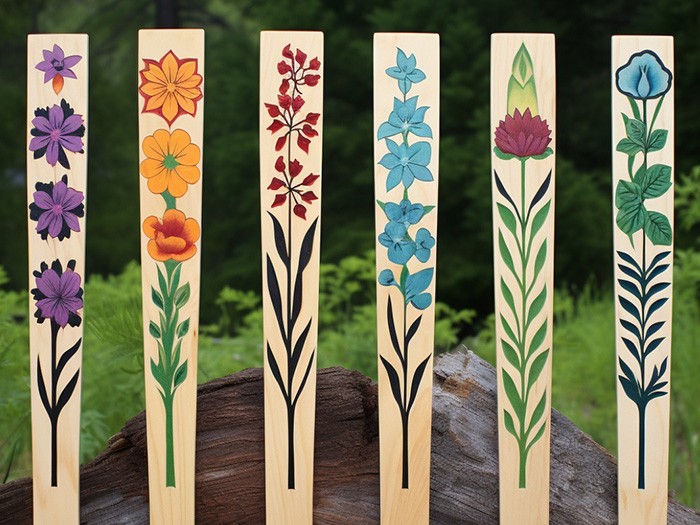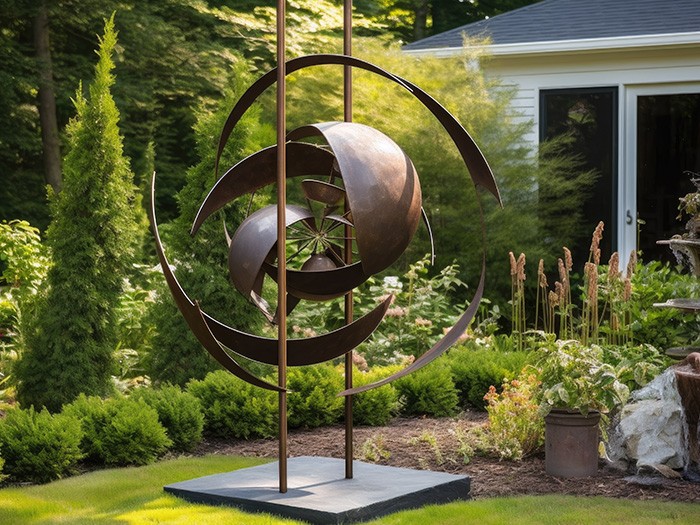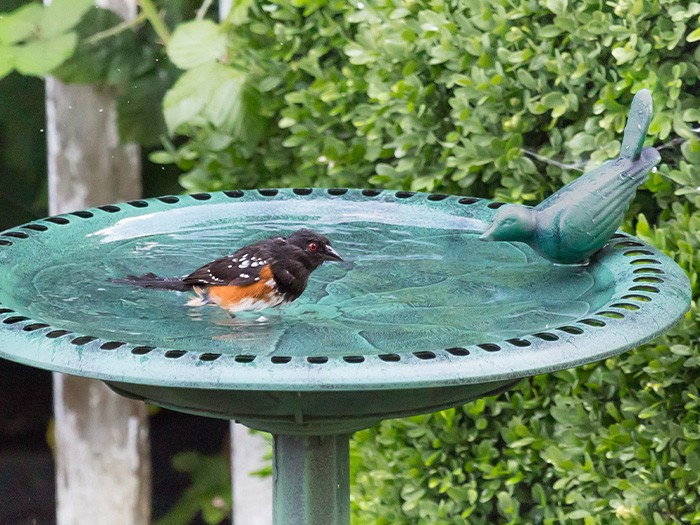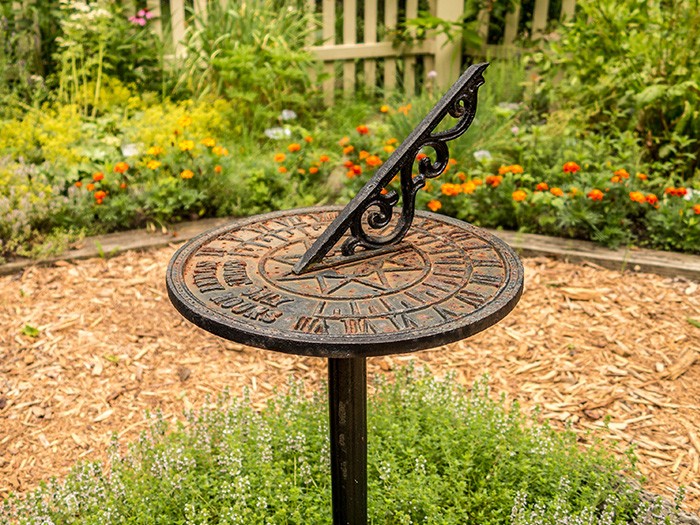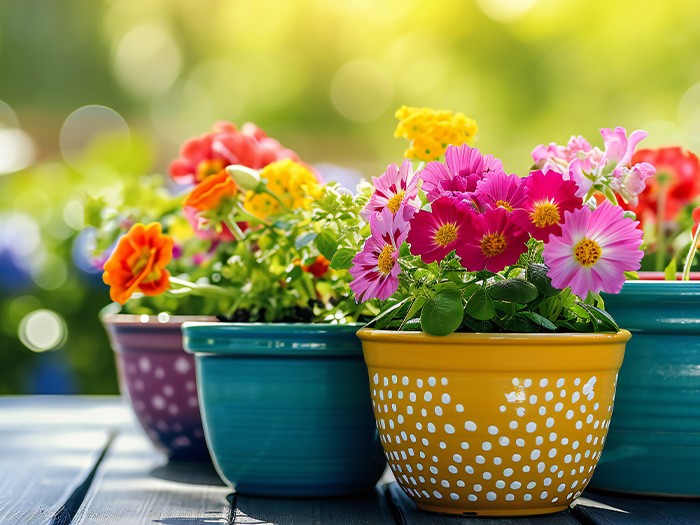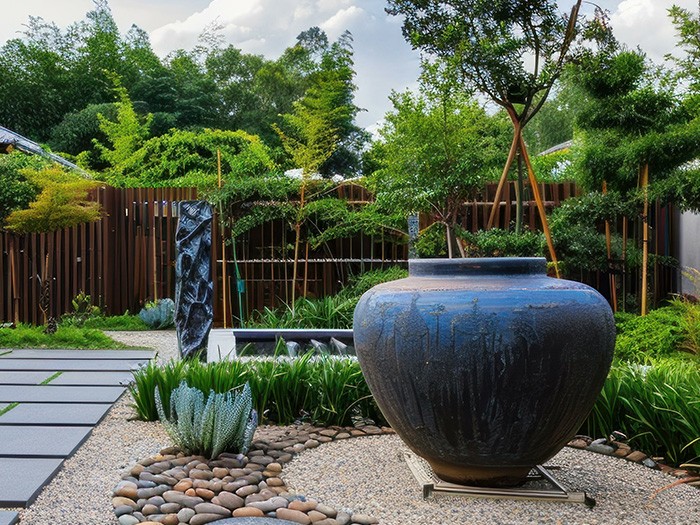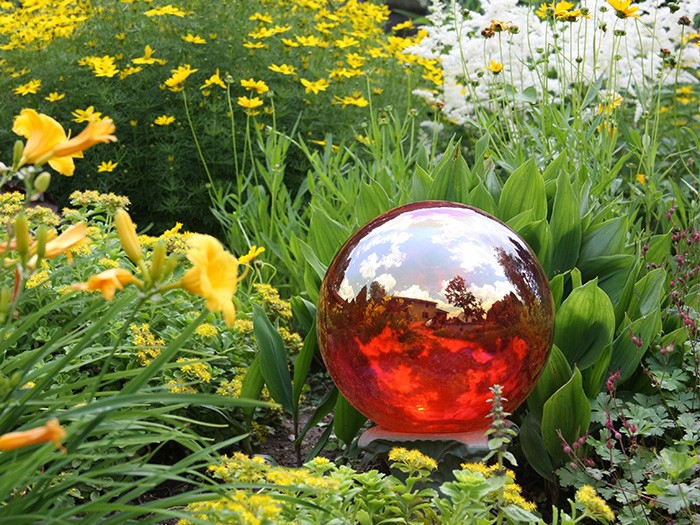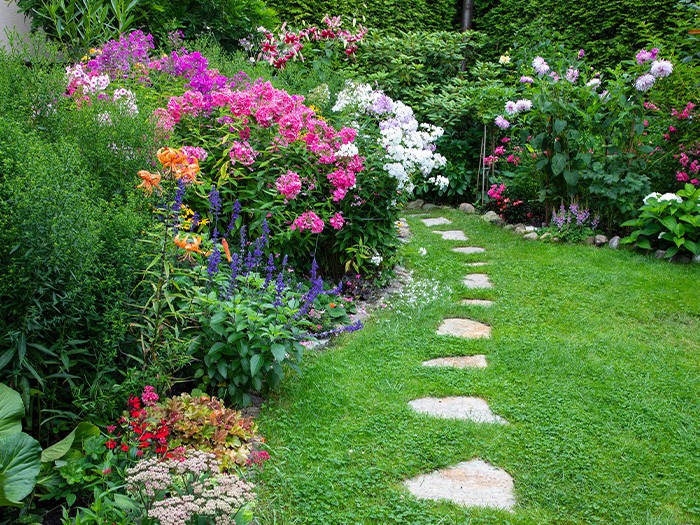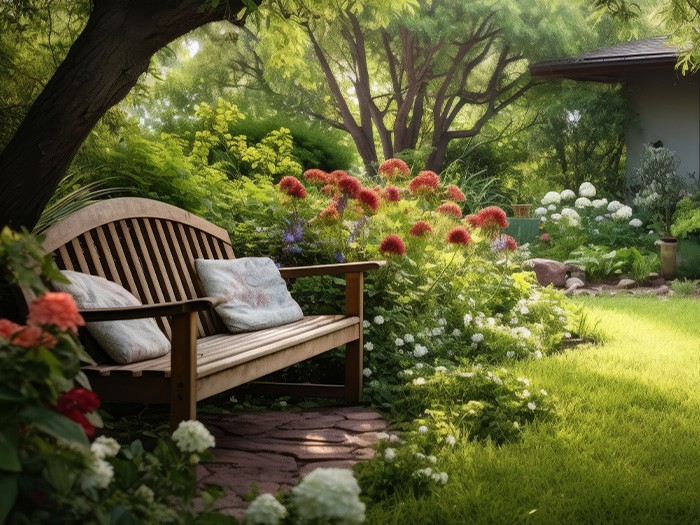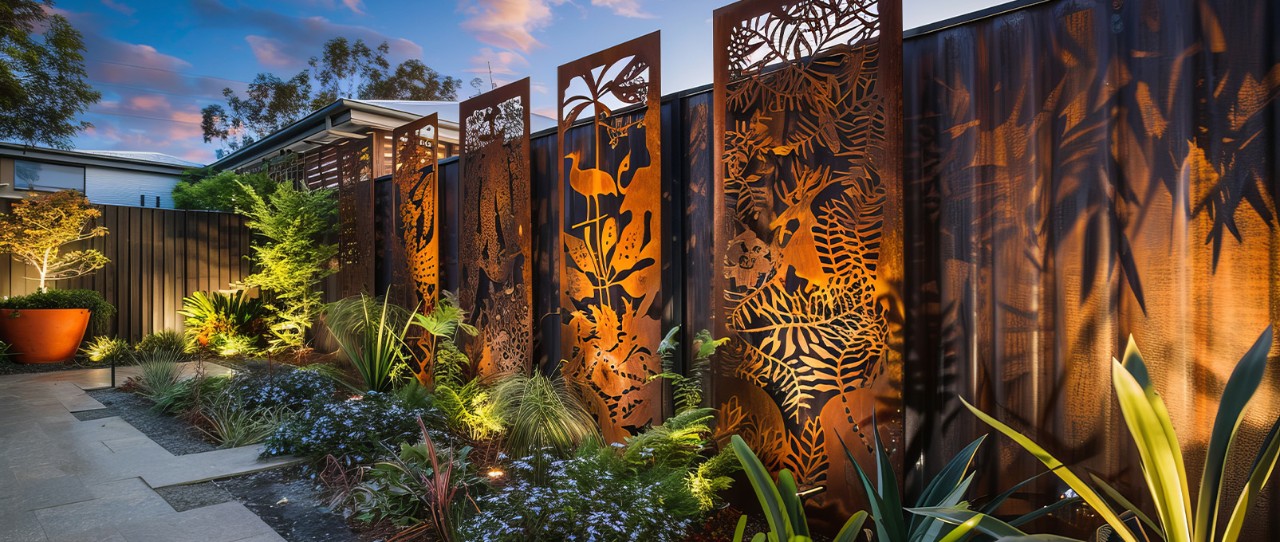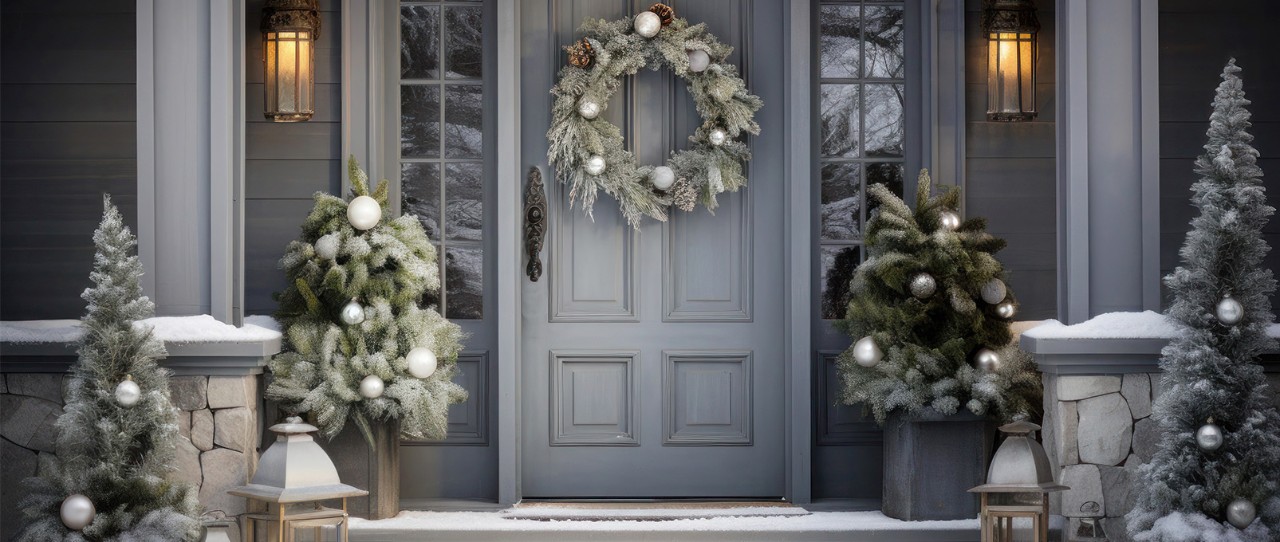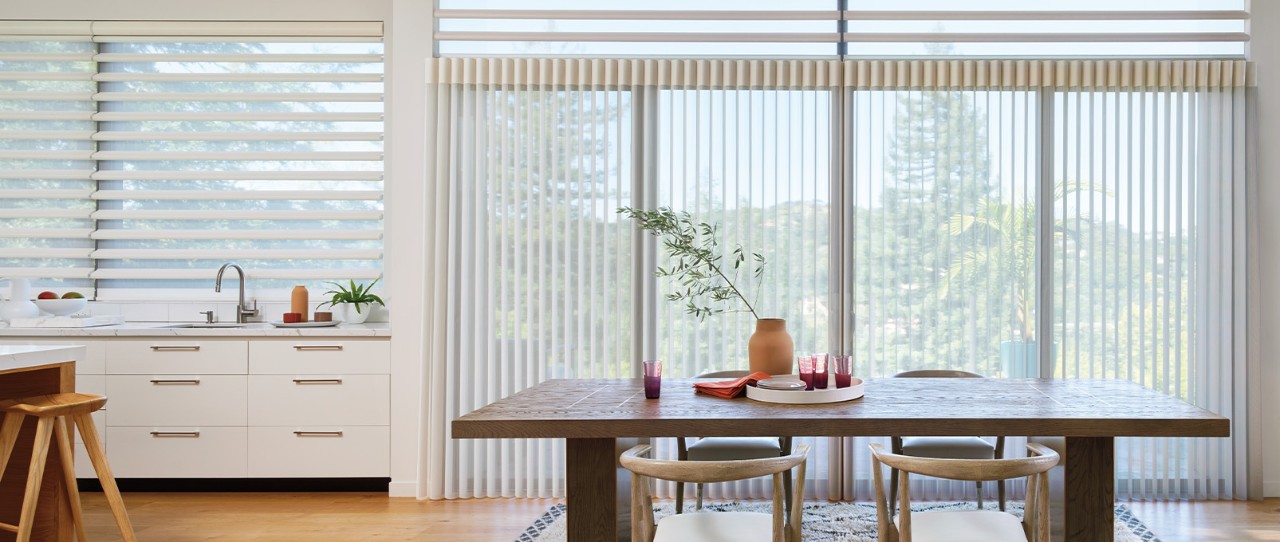A pedestal birdbath: The primary benefit of a pedestal birdbath is, of course, to provide a water source for feathered friends. Nestled into a garden bed, a pedestal birdbath also adds a point of interest.
When it comes to birdbaths, plastic or fiberglass are good choices, as you can leave them out year-round in climates where temps drop to freezing or below. While they may not look as sleek as a glazed birdbath in a color that pops, the traction afforded by the material’s texture makes it easier for birds to perch. (If you do go the route of a glazed birdbath, put a rock in the birdbath’s center so the birds have somewhere to land. This is also a good idea if your birdbath, regardless of material, is on the deeper side.)
A sundial: While you probably don’t need to keep track of time in your garden, a sundial brings an air of sophistication to a landscape.
The two most common types of sundials are horizontal and armillary. Horizontal sundials lay flat and have an elevated, angled arm called a gnomon. Armillary sundials are a spherical shape created out of interlocking rings. While both types are available in a variety of sizes, the flatness of a horizontal sundial gives you more flexibility when incorporating it into your garden; depending on the size of an armillary sundial, you made need a decent amount of space.
